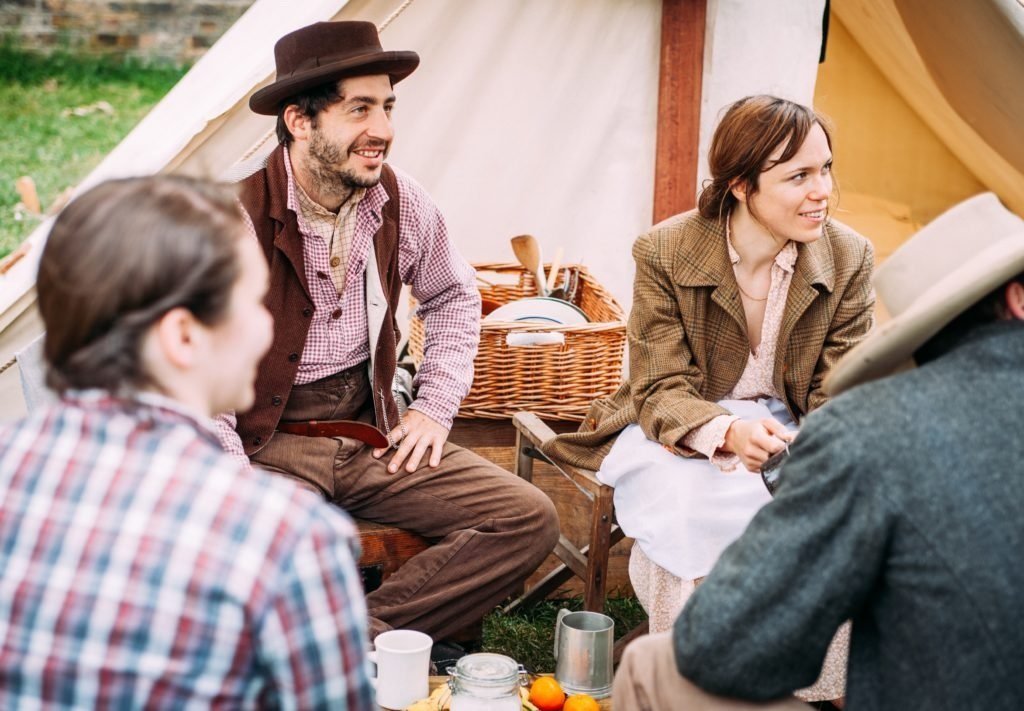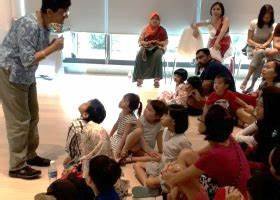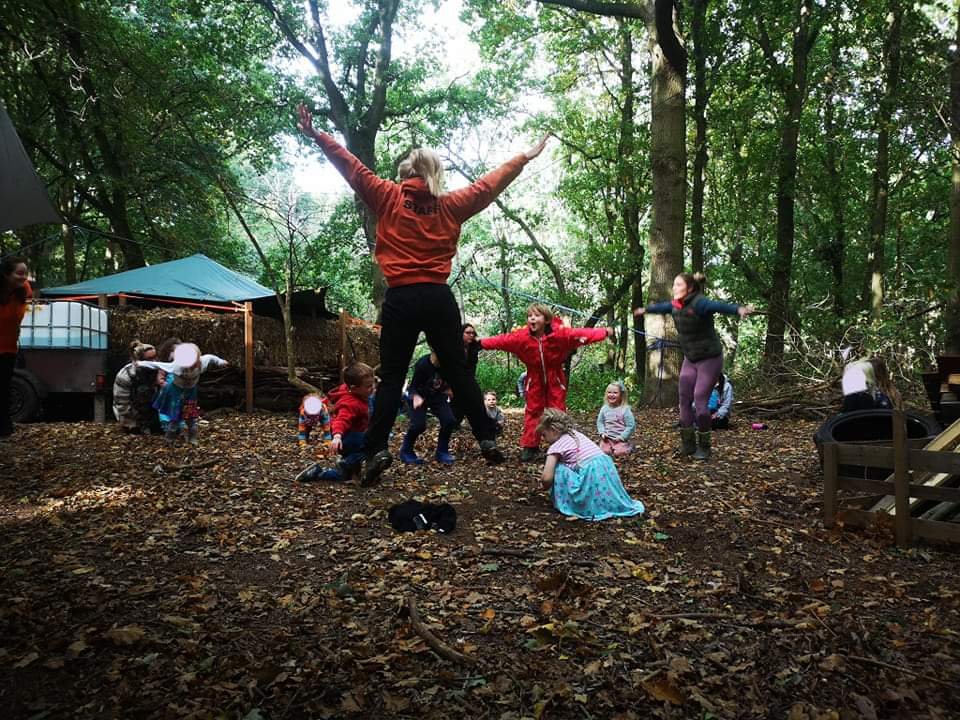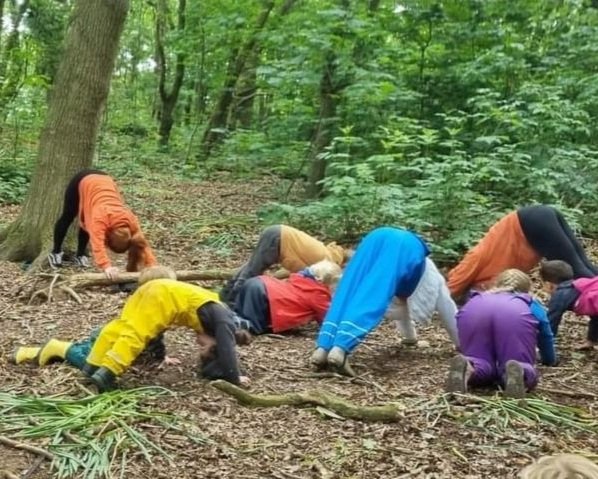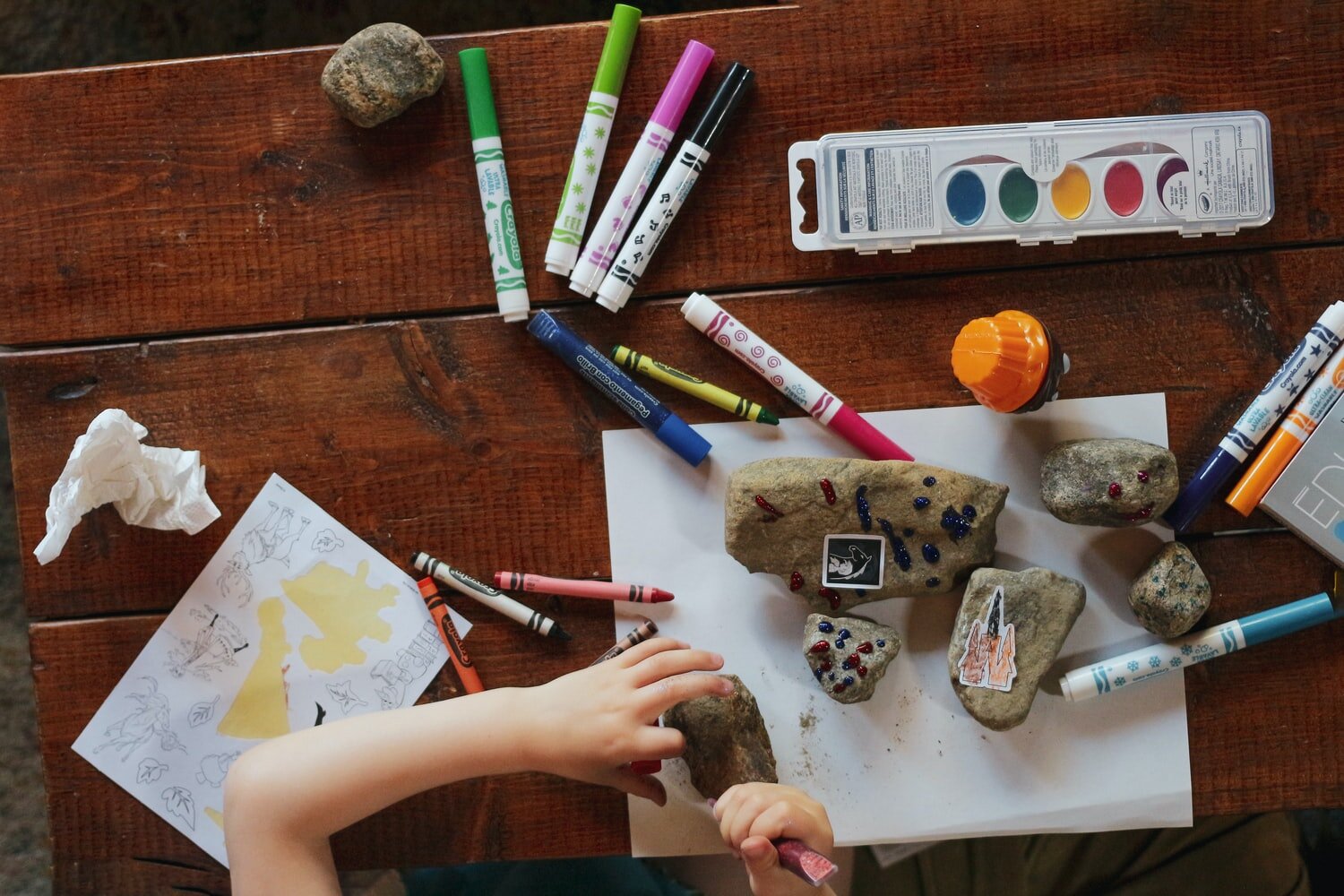How to Have a Fabulous National Story Telling Week on a Budget!
National Storytelling Week (NSTW) is a firm favourite of myself as an early years consultant. I am a firm believer that we all have a story inside us to tell, we are born storytellers. And this week gives us the opportunity to share stories, to build narratives and even better we can do it on a budget without spending hundreds of pounds!
Here are your 5 tips for doing NSTW on a budget:
1. Involve your community!
We will all have members of our teams, families, or local people in our community that have stories to tell. Whether It is a traditional or cultural story passed down from generation to generation Ask people in to tell a story or research stories that families share that they grew up with. Also, are day to day lives are made up of stories, from telling a story about going to the shops or a holiday that we have recently had. This is also a great time to look at the stories of different occupations, for example, the day in the life of a builder.
(Images left to right: Fresh Expressions 2023, Storytellers Singapore, 100 Stories Before School 2015)
2. Make your own puppets!
Practise scissor skills cutting out your favourite characters from magazines and catalogues. Then turn them into your own stick puppets for storytelling, by sticking them onto lollypop sticks. Or design on cardboard and carefully cut out your very own characters to be the centre of your story, perhaps a dragon, a princess or a monster! Or make some of simple finger felt finger puppets developing fine motor skills and sewing around the edge.
3. Model storytelling in play
As children play and add a narrative to their play they are naturally telling stories. Play alongside the children, modelling vocabulary structure and natural storytelling. Whether it is when you are playing with the small world toys, or making up stories in the garden about running away from a big scary monster. Children need to see us as storytellers as well.
4. Create story maps
Story mapping is a great way of involving children story telling and sequencing. You can use this to tell a story children are familiar with or use it as a tool to visually map out the story you are telling. It is great for highlighting the details of a story beyond beginning, middle and end as you draw pictures for the main points of the story. This is also a technique that children can then use to retell their own stories before they are ready to write.
(Aberford C of E Primary, 2017)
5. Yoga Storytelling
I was recently at an outdoor setting (Born to Woodland in Rayleigh Essex) and was very inspired by their yoga story time. They have a story of the month, e.g. the very hungry caterpillar and they use different yoga moves to support children's wellbeing and physical development. I loved this idea and is something you can easily makeup or do in your setting. There are also a variety of books and online resources available to help you with this.
(Photo Credits: The wonderful staff and children at Born to Woodland, Rayleigh Essex. Joining in their yoga stories! Born to Woodland is a setting that caters for children between the ages of 3 to 11 years old).
World Nursery Rhyme Week: The Intent of Nursery Rhymes
10th -14th November 2025
World nursery rhyme week is here again. It is a fantastic opportunity to celebrate nursery rhymes in early years settings. To remember centuries worth of history, past from generation to generation that supports children’s learning and development. This blog posts explores the intent (why) behind singing nursery rhymes in early years settings with a particular focus on supporting speech, language and communication development, but also the question of quantity verses quality.
Why do we sing nursery rhymes?
Over the years research and our professional knowledge has shown many benefits to singing nursery rhymes with children. These are things such as:
Supporting young children’s communication and language development.
Increasing children’s vocabulary.
A strong link between nursery rhymes supporting communication and language development and early literacy development.
Helps children tune into rhythm and rhyme in nursery rhymes that is an important part of early phonics skills.
Research has shown that children who know 8 nursery rhymes by the age of 4 years old are some of the best readers by the age of 8 years old (Meme Fox, Reading Magic).
Can support all areas of cognition, for example, learning to recite numbers through number rhymes.
Can help build children’s self-confidence.
Supports attachments and emotional well-being in babies and young children as they bond with caregivers whilst singing rhymes together.
A pack of 7 carefully planned nursery rhyme group activities to support children’s learning and development. With clear instructions and outlines of what is needed to run each simple fun and engaging session. Each activity has a a bit of a twist on the way that you would normally sing the rhymes to make them fun and engaging for all.
The Impact of Speech Language and Communication Needs
Nursery rhymes are proven to support communication and language development, increasing children’s understanding of language and also their vocabulary. Now more then ever we are seeing children start early years settings with a speech and language delay. NHS England (2019) states that “18–31% of children aged 19–21 months living in disadvantaged communities have language delay that warrants referral for specialist assessment.”. Additionally, NHS England (2019) states that 50% of children starting school from a socially disadvantaged background start school with a language delay or a Speech Language and Communication Need (SLCN). Additionally, research published by Speech and Language UK (2023) suggests that 1 in 5 (20%) children struggle with talking and understanding words. This is 1.9 million children in the UK! And that 80% of teachers feel that children are behind in talking.
This shows now more then ever the importance of focusing on nursery rhymes in the early years to support children’s SLCN, as part of a language rich curriculum. As well as supporting all children and going above and beyond to narrow the gaps in our societal inequalities based on social economical status. We can additionally see the long term impact of children being delayed in speech and language development. For example, Speech and Language UK (2023) report states the following staggering statistics, that children who are being in talking and understanding are 6 times more likely to be behind in English at age 11, 11 times more likely to behind in maths and twice as likely to be unemployed as an adult.
Here is a recorded version of our webinar, ‘Before I Can Write’. For individuals or teams to watch together as part of your continuous professional development. There is the opportunity to pause for discussions or self-reflection within the webinar. This recording has been made for those that have wanted to attend a live event but have not been able to.
This webinar explores how we cannot simply force children to write, before they are ready to learn to write there are many skills that they need to develop. This includes their communication and language, physical skills and imagination. This webinar begins to introduce some of the skills children need before they can write.
Quality Verses Quantity
Meme Foxe, statement that children who know 8 nursery rhymes by the age of 4 years old are some of the best readers at the age of 8 is very encouraging when we think about how much children need to know in order to achieve. This is also highlights the point that it isn’t about quantity of singing rhymes, but actually the quality of the interaction with those rhymes and supporting children’s communication and language development through singing nursery rhymes.
This is reassuring for those of us that have ever felt the pressure, when we sing the same nursery rhymes over and over again in our setting; because they are the children’s favourites! But feeling like we have failed because we are singing again, baa baa black sheep or twinkle twinkle chocolate bar! Although as adults or practitioners we might feel exhausted or tired of the same old rhymes again, repetition is actually really important to young children’s learning and development. The more children repeat an action or activity the stronger the connections (synapses) in their brains come between that all important information.
We also know that when introducing new vocabulary to children with stories it is more beneficial for them to have the same story 3 times with the new vocabulary, then 3 different stories over the week with the same vocabulary. Children who have had the same story actually show a greater use and comprehension of the new vocabulary then their peers. (Raikes et al, 2006). I think that when we think about introducing nursery rhymes to children the same principle applies. It is much better to focus on one new rhyme at a time, then trying to learn the same vocabulary through many different rhymes. So be bold, don’t be scared of diving deep into those nursery rhymes. Don’t be afraid to sing the same one again, again and again.
An activity pack filled with ideas of supporting the nursery rhyme 5 little men in a flying saucer and STEM (Science, Technology, Engineering and Mathematics) in the early years. Created by a passionate early years teacher.
Blog post updated on 11/11/2025. Please do leave us a comment with your thoughts.
Creative Ways of Using Phonics Flashcards
We are probably all guilty of having a pack or two of phonics flashcards in our classroom, nursery or preschool; even though this may be considered by some a dated practice and a form of traditional education that is no longer perceived as developmentally appropriate practice. Over recent years we have learnt a lot about how children learn and develop, we know that children are active learners, who learn through play and exploration and hands-on experiences.
The great theorist Piaget believed that children construct knowledge around them through developing mental structures (schemas) that we develop and change through our experience and interaction with the world around us. Where children either accommodate (adapt current ideas to include new ones) or assimilate (create new ideas) as a result of new knowledge and experiences. (McCloed 2018). Piaget was famously quoted to say that “Children have real understanding only of things in which they event!” He felt that it was important to allow children to explore and construct knowledge through play and being given the opportunities to develop their ideas for themselves. They do not learn and develop through being told, but by experiencing and doing is where true learning comes.
Similarly, Vygotsky theorised that children are always a foot taller than themselves in play. He recognised that when children are playing and exploring, they show a greater depth and understanding of learning. They use more in-depth language, higher social skills and skills that are far beyond their normal activities. This is why when we are using our phonics flashcards, we want to make it playful and engaging for children, although, we recognise that this is not true play rather just playful. As true play is uninterrupted, child-led and doesn’t have a planned outcome. Nevertheless, though I do believe that by making our use of phonics flashcards playful, interactive, hands-on and more engaging there is a higher level of learning then simply showing children a flashcard and getting them to repeat the sound.
So, let’s get creative and dust of the phonics flashcards and develop some interactive activities/hands on experiences for children.
1. Letter formation in small trays – use phonics flashcards alongside small trays of items such as salt, coloured sand, coloured rice, paint or PVA glue. Encourage children to copy the formation of the letters in their small individual tray, you can be creative and use a wide range of things to mark-make from fingers, paintbrushes, cars, trains, sticks, fir cones, to feathers.
2. Hide and seek phonics flashcards – hide phonics flashcards around your indoor or outdoor area and go on a sound hunt. Get the children to say the sound they have found, or model the sound to them.
3. Phonics flashcard snap – turn your phonics flashcards into a turn taking game of snap. Great for developing turn-taking and concentration skills.
4. Phonics flashcard memory game – turn your phonics flashcards into a memory game. Take it in turns to find pairs that match. Again, perfect for developing turn-taking skills, concentration skills, learning rules and boundaries of games and developing those all-important memory skills.
5. Phonics Flashcards Walk – Hole punch the flashcards and put them on some string that can go around children’s necks comfortable. Go on a walk and see how many times your children can find the sound they are wearing. You can introduce mathematics doing simple tally charts. Or ICT by taking photographs of them with the sound that they are wearing.
6. Hunt the phonics flashcards in the sand pit – hide the phonics flashcards in the sandpit so the children have to dig and find them. Saying the sound as they find them.
7. Phonics flashcards movement game – Pop the different phonics flashcards around the room or outdoor area where children can see them and get them to move in different ways. For example, can you jump to the ‘s’? This is great for developing skills to listen and follow instructions and moving in different ways.
8. Phonics flashcards pass the parcel – Play pass the parcel with the phonics flashcards, pop the flashcards in a basket or box and pass it around the circle as the music plays. When the music stops the child holding the basket or box has to pick a flashcard and say the sound.
9. Phonics flashcards fishing – Staple the flashcards and put them in a tray of rice coloured blue. Use magnets to fish out your phonics flashcards.
10. I spy letters – Place your flashcards under a rectangle-based glass dish. Put a jar upside down in the glass dish, place in some coloured water of your choosing. Do not lift up the glass jar and it will create a viewing of what is below. Slide the jar around and see what sounds you can find hidden under the water.
11. Phonics flashcards bottle lid hockey - put a large piece of paper on the floor and divide the paper into sections. On either side of each section (up the left hand side and right hand side) place a phonics flashcard with some of the sounds you are learning. On each bottle lid write a vowel or diagraph you are learning such as ‘oo’. The children choose a bottle lid and push it along the paper to see how far it can go. They then read the sounds, for example c - a -t makes cat and have a list to write real and nonsense words.
12. Phonics flashcards hoop leap - Place a phonics flashcard in each hoop e.g. s - a - t and as children jump from one hoop to another they blend the sounds and say the word. You can also get them to make their own words and decide whether they are a nonsense word or a real word.
Growing together offers online 45-minute webinars on overview to phase one phonics and playful phase two phonics. We also offer packages where you can train your whole team (up to 30 people) online for £175 and we provide you with a three-hour training session on phonics (which can be split up across different days). To look at our current online training options please click here or email pauline@growingtogetherearlyyears.co.uk.
Written by Pauline Milsted
Director of Growing Together Developing Early Years
The Importance of Language Development for Literacy in Early Childhood.
As a society we have a very heavy misguided emphasis on academic literacy skills in the early years such as can they write their name, can they read a simple word, write a caption, trace letters and form them or match letters (graphemes) to the relevant sounds (phonemes). As parents, carers, early years professionals, teachers, practitioners and managers of settings we feel the pressure to push these literacy skills! Here’s the thing though we need to slow down children need a rich exposure and command of language before we even consider literacy skills such as reading, writing, comprehension and storytelling!
In order to be able to tell a story we first need to have the language to recreate stories, give a narrative, elaborate on our ideas and our thoughts. We can’t tell a story without first developing our understanding of language, developing our listening and attention skills and being able to practise speaking language. Before we are ready to write a story, we need to able to express them in our play, use the narrative as we play with the dinosaurs or make a birthday cake in the role-play area. The richer and more exposure children have to developing language in the early years through play and secure foundations, the better they will achieve later on in school.
Colker (2014) research has shown that there is 30-million-word gap between the wealthiest and poorest families in their study by the age of 3! That is a lot of words that some children have not been exposed to and that lack of vocabulary is going to have an impact on their development. So rather than focusing on literacy skills such as writing, tracing letters (which in my opinion is not literacy – but let’s not go there today!) what we should be focusing on is closing the language gap! Exposing children to more vocabulary, singing a variety of rhymes and songs, exploring and talking alongside our children, reading stories, making up stories, engaging in play, becoming mummy bear or Deno the dinosaur.
In order to be able to understand texts, to read and write segmenting and blending sounds. Children also need the opportunity to first before we even consider this literacy skills, to develop their listening and attention skills and have the opportunity to develop their understanding of vocabulary. We cannot rush children to read, write or develop comprehension before they have the basic skills they need; early childhood is simply not a rush.
Before a child is ready to read words such as b-i-g or c-a-t they need to be able to distinguish the sounds in the words, these means they need to be able to hear the difference to tune into sounds and describe sounds. This tuning into sounds for early phonics learning is done through the environment, musical instruments, body percussion, rhyme and alliteration, not through focusing on writing the word and letters. We need to take it back a step, work on listening and attention with our young children and worry less about the writing and reading.
Also, it is no good a child being able to write or read the words ‘big cat’ if they have no comprehension or meaning of those words, what is big, what is cat? It simply then is nothing but a copying exercise. So, we need to take the time to explore words and meanings alongside children. Talk with our children, set up open ended explorations and play opportunities that are rich in language.
So here is my challenge for you, help develop children’s language development through developing vocabulary, listening skills, opportunities to speak and grow in a language rich environment. I can guarantee this will pay of to helping their literacy skills when they are ready!


